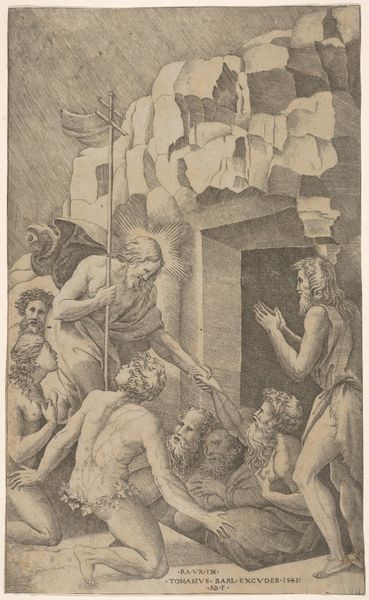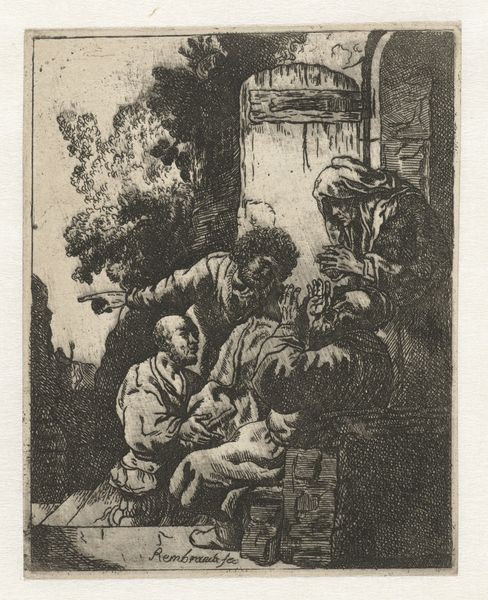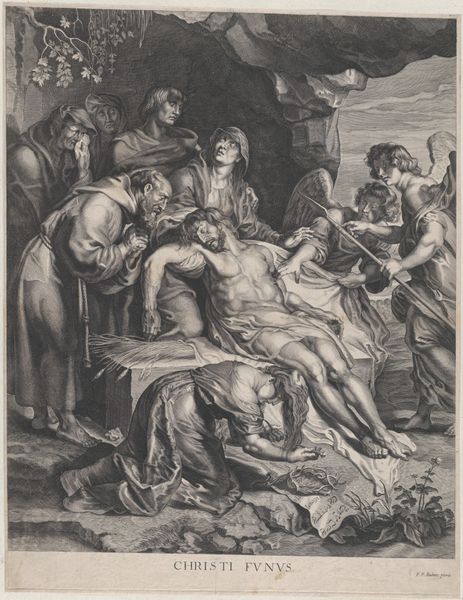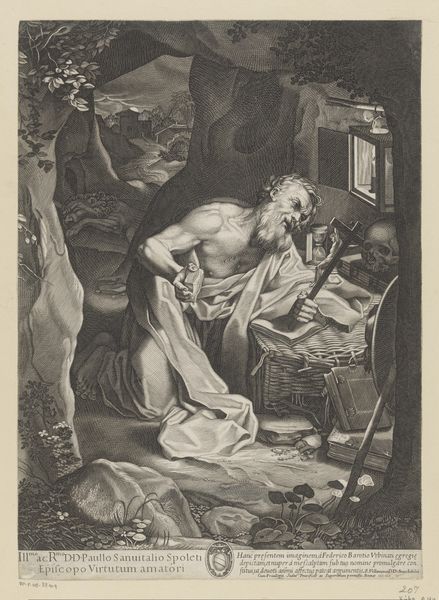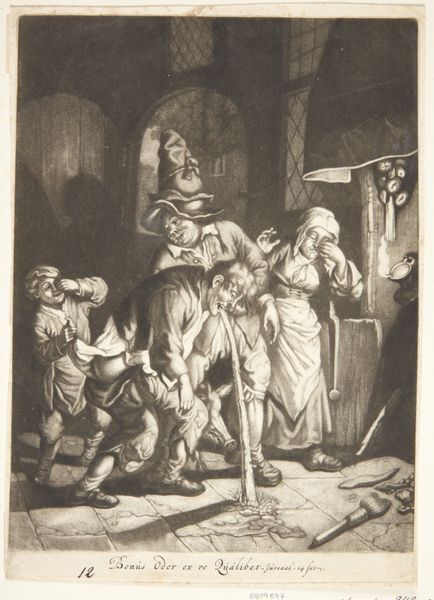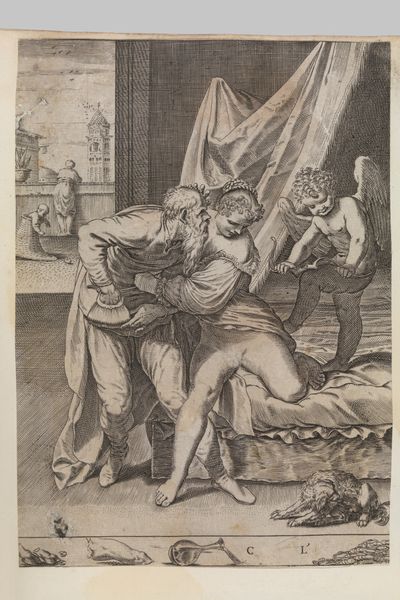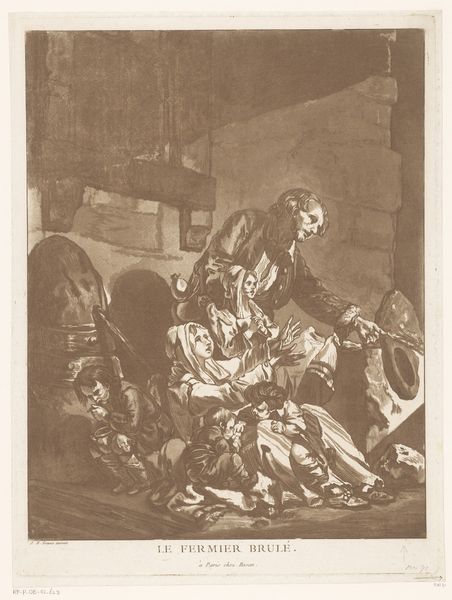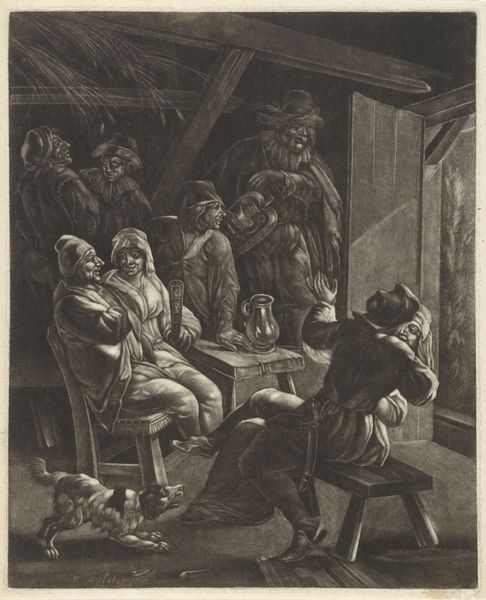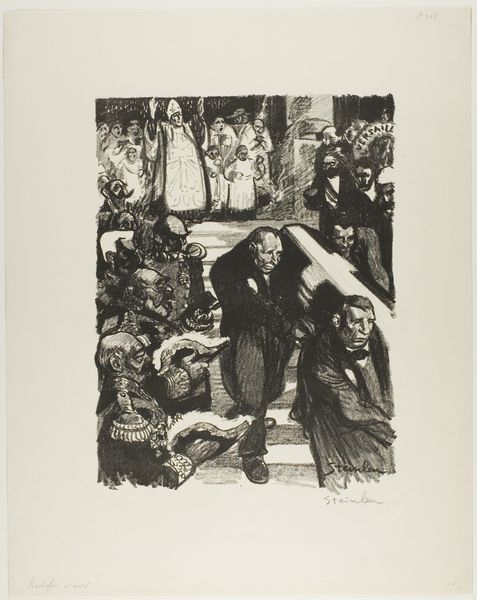
print, etching, intaglio, engraving
#
narrative-art
# print
#
etching
#
intaglio
#
old engraving style
#
landscape
#
archive photography
#
historical photography
#
19th century
#
history-painting
#
academic-art
#
engraving
#
realism
Dimensions: height 337 mm, width 230 mm
Copyright: Rijks Museum: Open Domain
Maurice Valette created this print, titled "The Good Samaritan," after a painting by H.L. Dupray, a medalist at the Paris Salon of 1877. This image vividly illustrates the parable from the Gospel of Luke, where a traveler is robbed and left for dead. A priest and a Levite pass him by, but a Samaritan, considered an outsider, stops to help. This narrative resonated deeply in 19th-century France, a time marked by social divisions and moral questioning. The print's cultural references are significant. The choice of a Samaritan, traditionally viewed with suspicion, as the compassionate figure challenges societal prejudices. The detailed rendering of the scene evokes both empathy and introspection, prompting viewers to reflect on their own attitudes toward the marginalized. Art historians might explore the institutional context of the Paris Salon, where Dupray's painting was first exhibited. Understanding the artistic conventions and social expectations of the time can shed light on the print's reception and impact. We can use period documents, such as exhibition reviews and social commentaries, to better understand the print's message.
Comments
No comments
Be the first to comment and join the conversation on the ultimate creative platform.
